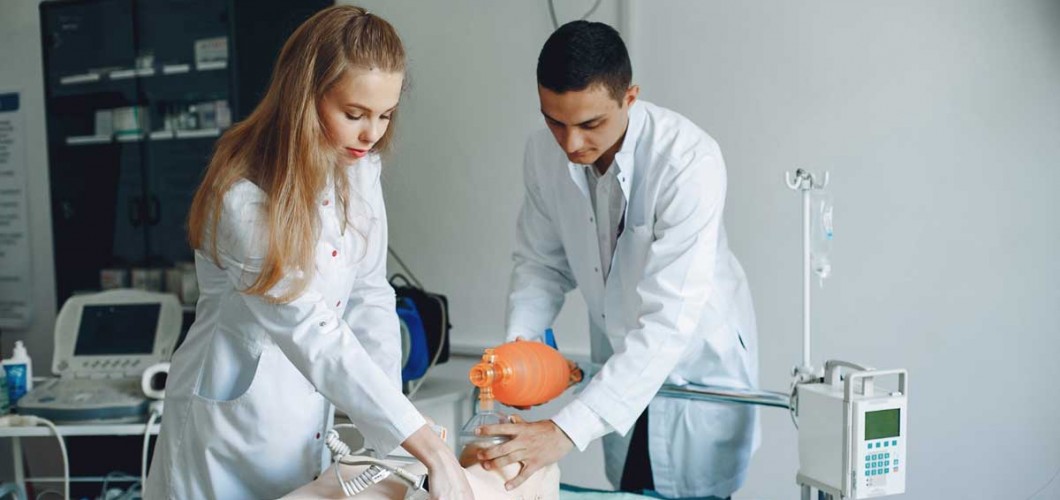
Basic Life Support (CPR) and first aid are life-saving skills that everyone should learn. In emergencies such as traffic accidents, sudden illnesses, drowning, or heart attacks, providing the correct intervention can significantly increase the chances of survival. In this article, we will discuss where you can take CPR and first aid training, what the training entails, and what the process involves.
What is Basic CPR and First Aid Training?
Basic CPR (Cardiopulmonary Resuscitation)
CPR is an emergency procedure applied when the heart and breathing stop. When someone's heart stops, chest compressions and artificial respiration are necessary to maintain oxygen flow to the brain. This intervention provides life support until professional help arrives.
First Aid
First aid is the initial care provided to a person who has been injured or is experiencing a medical emergency until professional medical help can arrive. It includes basic treatments for injuries, bleeding, fractures, burns, and other health issues.
Both skills are crucial for personal and community safety. Now, let’s explore where you can take basic CPR and first aid training.
Where Can You Take CPR and First Aid Training?
1. Red Crescent and Other NGOs
The Red Crescent is one of Turkey’s most established and widespread non-governmental organizations and offers CPR and first aid courses. In these training sessions, expert instructors teach vital information such as first aid techniques, CPR, bleeding control, burn treatment, and more.
Red Crescent Training Programs:
- Includes basic first aid and CPR training.
- You can check the Red Crescent website for training dates and locations.
2. Ministry of Health and Provincial Health Directorates
The Ministry of Health organizes various first aid and CPR training programs. Provincial Health Directorates collaborate with local hospitals and health institutions to provide these courses.
Ministry of Health Training Programs:
- First aid and CPR training are offered at health centers affiliated with the Ministry of Health.
- Applications for participation are generally made online.
- The training includes basic first aid skills and emergency interventions.
3. Private Training Institutions and Certification Programs
Many private training institutions offer certified CPR and first aid courses. These courses are generally shorter and provide hands-on practice. Additionally, the certificates received from these courses can be used in workplaces, schools, or other public places as proof of competence in emergency situations.
Private Training Institutions Features:
- These courses are open to individual participants.
- Emphasis is placed on practical application.
- Certificates are usually awarded at the end of the course.
4. Emergency Medical Services and Ambulance Services
Emergency medical and ambulance services also offer CPR and first aid training. These programs are particularly useful for healthcare professionals and provide the knowledge and skills necessary to administer emergency medical interventions. Additionally, some healthcare institutions offer basic training programs for the general public.
Emergency Medical Training Programs:
- Typically suitable for healthcare professionals or those seeking medical training.
- Includes CPR and advanced first aid techniques.
5. Online Training Programs
In recent years, online CPR and first aid courses have become increasingly popular. These courses allow you to learn from the comfort of your home. However, since practical application is often lacking in online courses, these programs are typically better suited for acquiring theoretical knowledge.
Advantages of Online Training:
- You can complete the training without time or location restrictions.
- The training usually involves video lessons and online exams.
Basic CPR and First Aid Training Content
Basic CPR and first aid training typically includes the following content:
1. Basic Life Support (CPR)
- Chest compressions and artificial respiration techniques
- Airway obstruction and the Heimlich maneuver
- Interventions for choking, heart attacks, and other emergencies
- Special CPR techniques for children and infants
2. First Aid Basics
- Methods to control bleeding
- Handling fractures, dislocations, and sprains
- Initial treatment for burns and electrical injuries
- First aid for poisoning, allergic reactions, and other emergencies
3. Emergency Intervention Techniques
- Initial interventions for various injuries
- First aid for life-threatening conditions like shock and hypothermia
- Artificial respiration and other intervention techniques
Certificates and Qualifications After Training
After completing basic CPR and first aid training, participants are generally awarded a certificate. These certificates are typically valid for two years and can vary depending on the institution providing the training. Many workplaces, schools, and health organizations may require their employees to have these certifications.
Conclusion
Basic CPR and first aid training is the first step in saving lives. There are many institutions where you can take these courses, including the Red Crescent, the Ministry of Health, private training institutions, and online platforms. Being able to respond to emergencies and potentially save someone’s life is of utmost importance. Therefore, getting the right training and becoming a competent first aider is essential.

Leave a Comment